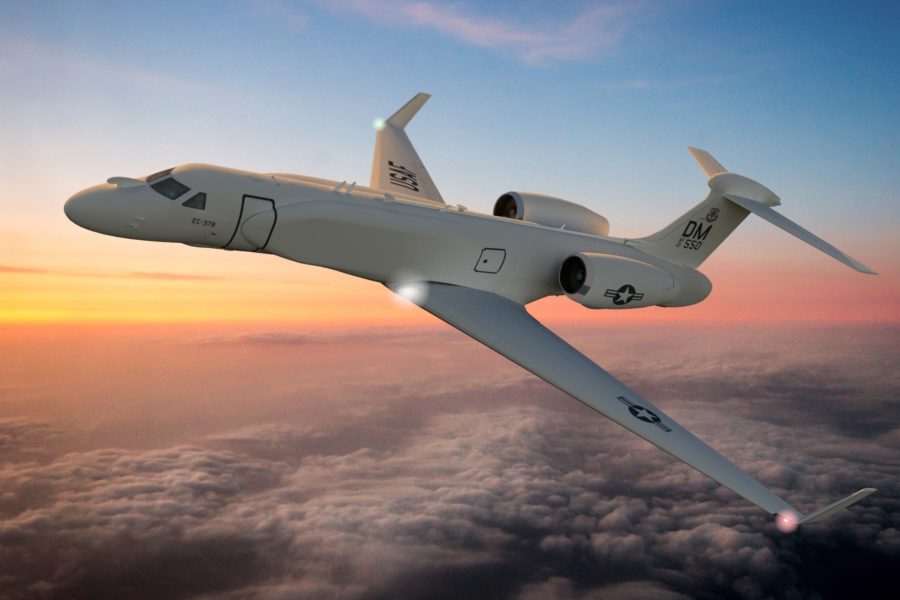BAE Systems, Inc. has formed a unique relationship with the U.S. Air Force over the service’s 75-year history. As one of the world’s largest aerospace and defense technology companies, BAE Systems is trusted by the Air Force with highly classified work, particularly in the field of electronic warfare (EW).
BAE Systems’ EW partnership with the U.S. Air Force dates to the 1950s, when it was known by its legacy company name, Sanders. Today, the company delivers superior situational awareness, even in the most complex battlespaces, with fifth-generation electronic support, electronic protection, and electronic attack capabilities.
“Our company’s EW heritage began in the 1950s with signals intelligence,” said Nick Myers, director of strategy and growth for BAE Systems’ Electronic Combat Solutions business area, and a retired U.S. Air Force Colonel. “Once you understand signals intelligence, providing countermeasures is the next step, and the Air Force’s U-2 programs are really what got us involved in the countermeasures business for electronic warfare and protecting aircraft.”
By continually providing EW hardware, BAE Systems has been building off the legacy of Sanders and the U-2 program by adapting to rapid technological advancements.
“Our systems are designed for today’s and tomorrow’s evolving threats,” said Myers. “When it first started, the U-2 flew so high that there weren’t any threats capable of reaching it. But over time, threats advanced and so we used our signal intelligence background to develop a countermeasure. It’s a cat and mouse game that continues today, only it’s become extremely complex with today’s technological advancements.”
BAE Systems provides EW capabilities for unique mission sets, such as the EC-130H Compass Call and the future EC-37B platform.
“Radios use the electromagnetic spectrum (EMS) to transmit voice, data, and other communications, so an enemies’ radio provides information to their system that in turn make them a target for our countermeasures,” Myers said. “For the EC-130H that is transitioning to the EC-37B, that’s a unique mission because it’s protecting other aircraft by providing blanket and surgical electronic attack coverage so they can successfully get to and from the target.”
But the EW systems BAE Systems provides can be found across a variety of Air Force platforms including the F-35, F-15, F-22, and others, enabling Airmen to effectively complete their missions.
“Pilots can better avoid threat systems to perform their missions, which would be extremely more difficult if they didn’t have one of our systems on board,” Myers said.

BAE Systems remains committed to its Air Force partner and continues to adapt to the EW threats of the future.
“We’re designing our systems not for just 2025 or 2030, we’re looking beyond 2040, at how the technology is advancing, and putting our internal investments against those future threats,” Myers said. “That way, when we design our systems, they’re not outdated by the time they’re delivered to the Air Force. Our experts have consistently done that as a part of our heritage – the ability to anticipate the advanced threat is a unique trait of BAE Systems.”
The Air Force has continually turned to BAE Systems as a trusted partner for solving challenging problems, including efforts to enhance and sustain fourth-generation fighters along with fifth-generation platforms.
“The Air Force has committed to keeping fourth-generation fighters around longer because our EW systems have evolved to the point that they can help keep those platforms protected from the advanced threat,” Myers said. “Our EW systems give the Air Force alternative options instead of divesting all these platforms because they’re not survivable. The Air Force has more flexibility in their force structure because its fourth generation platforms can remain relevant.”

BAE Systems values its role as a trusted Air Force partner, which is demonstrated through the company’s mission statement.
“Our company mission, ‘We Protect Those Who Protect Us®,’ is ingrained in the very fiber of this company,” Myers said. “That means something to me as someone who has worn the flag of this nation on my arm. We live and breathe the mission at BAE Systems every day.”
